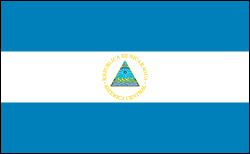Nicaragua History


Dictators Struggle for Power
After ordering Sandino's assassination, Gen. Anastasio Somoza García was dictator from 1936 until his own assassination in 1956. He was succeeded by his son Luis, who alternated with trusted family friends in the presidency until his death in 1967. He was succeeded by his brother, Maj. Gen. Anastasio Somoza Debayle. The Somozas ruled Nicaragua with an iron fist, reducing its dependence on banana exports, exiling political foes, and amassing a family fortune.
Sandinista guerrillas, leftists who took their name from Sandino, launched an offensive in 1979. After seven weeks of fighting, Somoza fled the country on July 17, 1979. The Sandinistas assumed power two days later. On Jan. 23, 1981, the Reagan administration suspended U.S. aid, charging that Nicaragua, with the aid of Cuba and the Soviet Union, was supplying arms to rebels in El Salvador. The Sandinistas denied the charges. Later that year, Nicaraguan guerrillas known as “Contras” began a war to overthrow the Sandinistas. Elections were finally held on Nov. 4, 1984, with Daniel Ortega, the Sandinista junta coordinator, winning the presidency. The war intensified in 1986–1987. Negotiations sponsored by the Contadora (neutral Latin American) nations foundered, but Costa Rican president Oscar Arias promoted a treaty signed by Central American leaders in Aug. 1987.







